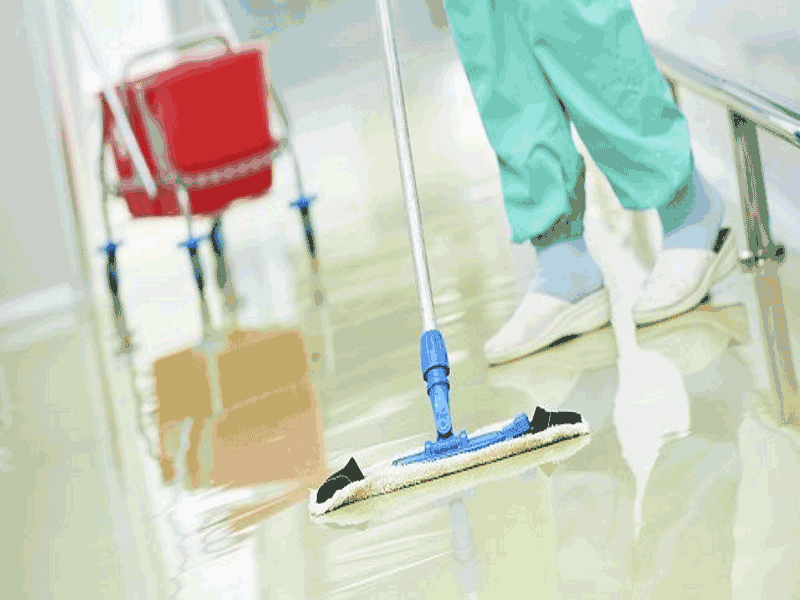Market Report
The Future of Industrial and Institutional Cleaning Products to 2023

Data in The Future of Industrial and Insittutional Cleaning Products to 2021 tracks how this will push a world market worth $43 billion (€38 billion) in 2015 to $51 billion at the end of its study period.
The fastest expanding demand for I&I cleaning products is in less mature, developing world markets. Smithers exclusive market data shows these will expand at 6% year-on-year across the five-year study period.
The Smithers report identifies several drivers fuelling the increase in global purchases of industrial and institutional (I&I) cleaning products, as suppliers have to balance existing requirements with new customer demands.
The most important properties of an I&I cleaner are – and will remain – that it:
This is now being joined by an increasing focus from users, regulators and lobbyists on delivering cleaning products that minimise their impact on the environment.
Brussels has led this trend, and all cleaners sold in Europe must conform to the EU Detergent Regulation 648/2004. This ensures all cleaners meet basic environmental and safety standards. But these do not fully address then contemporary demands environmentalists for better sustainability, and the use of natural ingredients.
In personal care and cosmetics consumers are significantly more willing to pay for a product that can be marketed as more natural or green. This effect is less marked with domestic cleaning products, where more sustainable products are desirable, but fewer buyers are willing to pay a premium. This is because with, for example, a domestic laundry detergent performance and price are key properties and so far only a few brands – like Method, Ecover – have pursued this option.
In I&I laundry, performance is even more important, which is placing a greater onus on new laws and other factors to foster greater sustainability.
Institutions are beginning to incline towards more bio-based or eco-friendly cleaning products however, following market and societal trends already leading a gradual transition in consumer applications. Institutions will accept green products if they provide similar or better performance in comparison with present synthetic-based cleaning products – at reasonable costs. Some types of institutes, such as hospitals may act rapidly to switch to more non-toxic and non-hazardous cleaning solutions for cleaning apparatus and surgical instruments if these meet performance requirements.
Manufacturing industries are increasingly exposed to criticism from lobbyists for damaging the environment by polluting soil, water and air through waste generated during production. The sector is strictly monitored by regulatory authorities to check periodically measures taken by the industry to control pollution under given limits. Proper cleaning of soils generated at factories and surrounding premises can significantly control the damage and negative publicity associated with oil spills and water contamination. In particular advanced surfactant-based detergents can be of great help in maintaining a clean environment at manufacturing sites.
Food and drink manufacturing requires companies to comply with various regulations defined for cleanliness and hygiene. Although regulations on food and drink manufacturing vary across national boundaries the need for high levels of hygiene and cleanliness is a common assertion, and there is some convergence. From June 2017, importers into the US for example will be audited under the Foreign Supplier Verification Programs (FSVP) of the 2012 Food Safety Modernization Act from June 2017.
The use of cleaning agents in kitchens is also now under scrutiny by health departments as certain cleaning agents can be toxic and hazardous to use. Thus despite the primacy of performance, food and drink manufacturing industry will welcome more sustainable ingredients if they are reasonably priced, non-toxic and non-hazardous.
The importance of cleanliness and hygiene is increasing in commercial sectors and markets for multi-purpose cleaning products show the highest demand according to Smithers latest data. Multi-purpose cleaners are those that can perform more than one function – for example cleaning floors, glass, and other surfaces, and simultaneously working as a degreaser for removing oil, grease and other hard stains. Using a single product for multiple uses has evident benefits of economy, and is also easier to manage and store.
Across the next five years he need for disinfectants and sanitisers is likely to receive boost from well-publicised epidemics – such as the Ebola virus, swine flu, and most recently the Zika virus – that can spread more rapidly across a globalised world.
I&I disinfectant cleaners are one of the key tools for sanitising floors and surfaces from unwanted microbes. Consequently healthcare facilities, hotels tourist destinations, offices and institutions are seeing rising applications for both these disinfectants and sanitisers.
The Smithers report identifies several drivers will fuel the increase in purchases of Industrial and Institutional (I&I) cleaning products as suppliers balance the existing requirements for performance, multi-functionality and cost with new demand for a reduced impact on the environment.
These and other key market drivers are identified, analysed and quantified in the Smithers report The Future of Industrial and Institutional Cleaning Products to 2021.